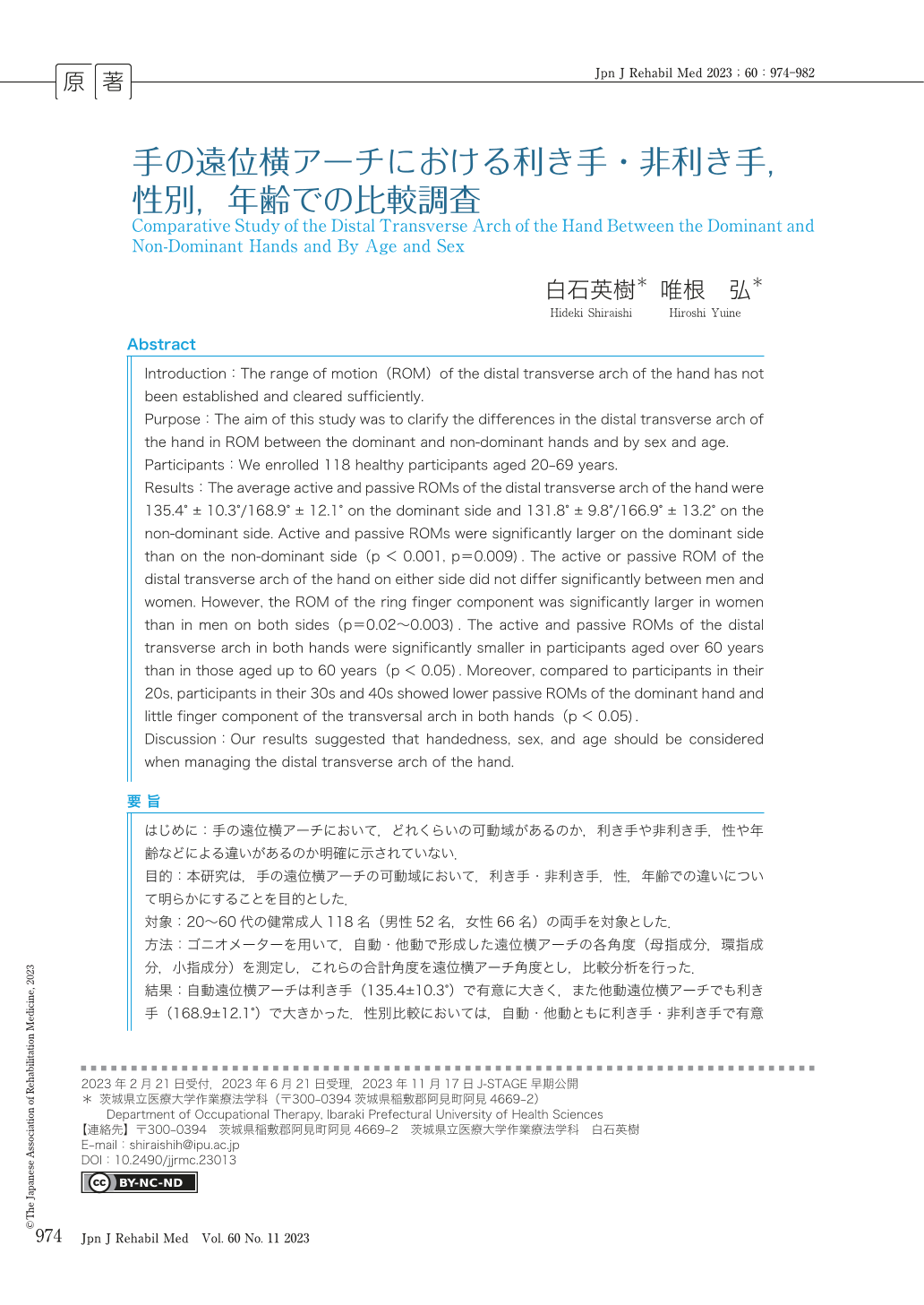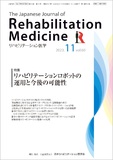Japanese
English
- 販売していません
- Abstract 文献概要
- 1ページ目 Look Inside
- 参考文献 Reference
要旨 はじめに:手の遠位横アーチにおいて,どれくらいの可動域があるのか,利き手や非利き手,性や年齢などによる違いがあるのか明確に示されていない.
目的:本研究は,手の遠位横アーチの可動域において,利き手・非利き手,性,年齢での違いについて明らかにすることを目的とした.
対象:20〜60代の健常成人118名(男性52名,女性66名)の両手を対象とした.
方法:ゴニオメーターを用いて,自動・他動で形成した遠位横アーチの各角度(母指成分,環指成分,小指成分)を測定し,これらの合計角度を遠位横アーチ角度とし,比較分析を行った.
結果:自動遠位横アーチは利き手(135.4±10.3°)で有意に大きく,また他動遠位横アーチでも利き手(168.9±12.1°)で大きかった.性別比較においては,自動・他動ともに利き手・非利き手で有意な違いはなかった.しかし,環指成分では女性で有意に可動域が大きかった.年代別では,若年層に比べ60代で,利き手・非利き手ともに自動・他動での遠位横アーチは有意に低下した.また,他動の利き手や小指成分では,30〜40代でも低下を示し,年齢が増すと低下する傾向が示された.
まとめ:手の遠位横アーチへのリハビリテーションでは,利き手・非利き手や性,年齢を考慮した介入の必要性が示唆された.
Abstract Introduction:The range of motion (ROM) of the distal transverse arch of the hand has not been established and cleared sufficiently.
Purpose:The aim of this study was to clarify the differences in the distal transverse arch of the hand in ROM between the dominant and non-dominant hands and by sex and age.
Participants:We enrolled 118 healthy participants aged 20-69 years.
Results:The average active and passive ROMs of the distal transverse arch of the hand were 135.4° ± 10.3°/168.9° ± 12.1° on the dominant side and 131.8° ± 9.8°/166.9° ± 13.2° on the non-dominant side. Active and passive ROMs were significantly larger on the dominant side than on the non-dominant side (p<0.001, p=0.009). The active or passive ROM of the distal transverse arch of the hand on either side did not differ significantly between men and women. However, the ROM of the ring finger component was significantly larger in women than in men on both sides (p=0.02〜0.003). The active and passive ROMs of the distal transverse arch in both hands were significantly smaller in participants aged over 60 years than in those aged up to 60 years (p<0.05). Moreover, compared to participants in their 20s, participants in their 30s and 40s showed lower passive ROMs of the dominant hand and little finger component of the transversal arch in both hands (p<0.05).
Discussion:Our results suggested that handedness, sex, and age should be considered when managing the distal transverse arch of the hand.

Copyright © 2023, The Japanese Association of Rehabilitation Medicine. All rights reserved.


